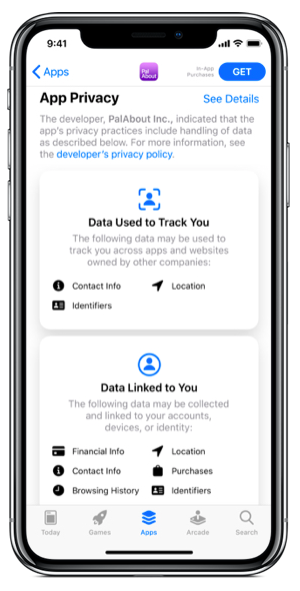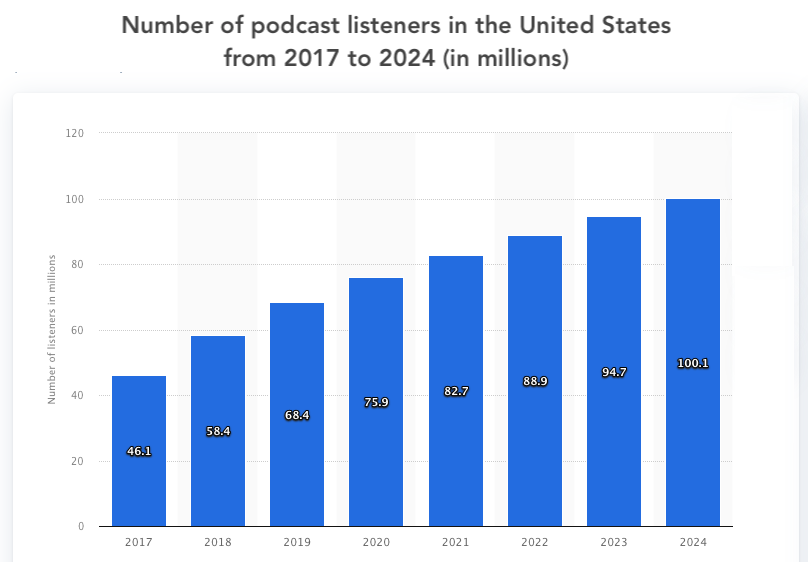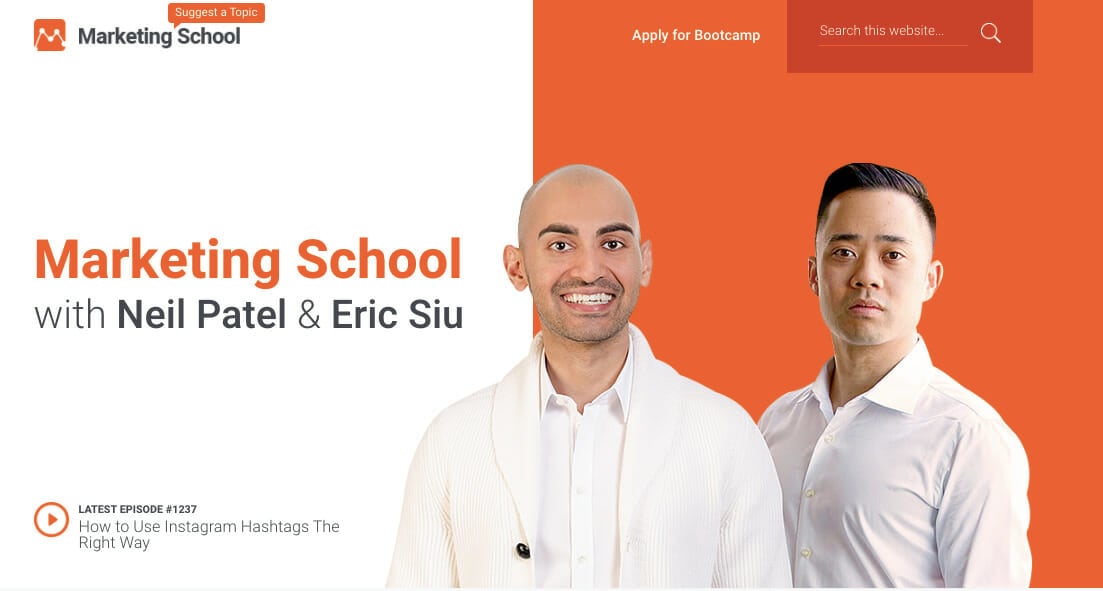When it comes to advertising and marketing, the digital world is always on the move, so keeping on top of trends is crucial to success.
From data and analytics to employee advocacy, we’ll explore four ways the future of digital advertising will change this year (and beyond). Staying ahead of the game is key in order to keep your digital marketing strategy on the cutting edge. (And to outshine your competitors, too, of course!)
So whether you’re an entrepreneur, startup, small business owner, SEO pro or just interested in the future of advertising, read on to discover what lies ahead in 2023 and beyond.
4 Trends That Will Shape the Future of Advertising in 2023 & Beyond
Let’s take a look at the four key areas where digital advertising is set to undergo significant changes – data and analytics, employee advocacy, your own channels, and podcasting.
Data and Analytics
One trend that will continue this year and beyond is the growing importance of data and analytics in marketing.
Not only are there a ton of channels to use, but tracking is becoming more challenging due to privacy changes like Apple’s App Tracking Transparency policy. Apple’s recent data privacy policy will prohibit certain data collection unless the user opts in via the prompt:

Since most people will opt out of tracking, events won’t be adequately tracked, thus affecting digital ad personalization and conversion reporting.
This means that companies will have no choice but to invest more in data and analytics.
Analyzing data is critical to making better marketing decisions. Data analysis allows companies to gain insights into consumer behavior, preferences and other important factors that can help them create effective marketing campaigns.
However, if a company analyzes bad data or inaccurate information, they may make decisions based on faulty assumptions, which can be detrimental to their marketing efforts.
For instance, if a company uses data that suggests that their target audience is mostly males between the ages of 18-24, but in reality their actual audience is predominantly females between the ages of 35-44, then the company will develop and launch marketing campaigns that are not nearly as effective as they could be. This results in wasted resources and money.
Therefore, investing in high-quality data analytics tools and solutions will be crucial. The best one for a particular company depends on their specific needs and budget, of course, but here are some of the most popular and widely used data analytics tools and solutions:
- Google Analytics: This is a free web analytics tool that tracks website traffic, user behavior, and other website metrics.
- Tableau: A powerful data visualization and business intelligence tool that helps users make sense of complex data sets.
- Looker: A business intelligence and data analytics platform that allows users to access and analyze data from multiple sources.
- Microsoft Power BI: A cloud-based business analytics service that provides interactive visualizations and business intelligence capabilities from dozens of data sources.
- QlikView: A data analytics and business intelligence platform that provides powerful data exploration and discovery tools.
- Oracle Analytics Cloud: A cloud-based analytics solution that provides business intelligence and data visualization capabilities to do everything from creating visualizations to leveraging machine learning to gain insights from your data.
- IBM Watson Analytics: An advanced analytics platform that uses artificial intelligence to help users discover insights and trends in their data.
Dive Deeper: How to Use Big Data Analytics to Grow Your Marketing ROI
Employee Advocacy
Another trend to expect this year is employee advocacy.
Employee advocacy refers to the promotion of a company’s products or services by its employees through their own personal and professional networks.
Companies are increasingly realizing the power of their employees’ social media followers and are thus encouraging them to leverage their networks to act as brand ambassadors.
Employee advocacy is essentially free marketing, making it an attractive option for businesses of all sizes. Companies that successfully implement employee advocacy programs will likely reap significant rewards, such as:
- Help build brand awareness, increase social media engagement, and drive traffic to the company’s website.
- Company content can reach a wider audience and generate more trust than if the same content was shared by the company’s content marketing team on the official account.
- Assist in establishing a company’s reputation as a thought leader in its industry, which can attract potential customers and employees.
- Fosters a sense of pride and loyalty among employees, who feel valued and invested in the company’s success.
Overall, employee advocacy is a cost-effective and powerful way for companies to extend their reach and influence on social media and beyond, while also creating a culture of engagement and empowerment among employees.
Creating Your Own Channels
Previously, companies heavily relied on Google and Facebook to advertise their products and services, but with the changes in tracking and privacy, many brands are starting to explore other options.
Traditional digital advertising channels like Google Ads and Facebook Ads are no longer as effective or easily scalable for brands as they used to be. As a result, companies need to look for alternative ways to reach their target audience and increase their brand visibility.
And one way for companies to do this is with an omni-channel approach in which they create to create their own channels, like:
With their own channels, companies can avoid being at the mercy of external platforms, and instead enjoy:
- Control: Companies have more control over their messaging, branding and even user experience with their own channels. They can tailor their content to fit their unique voice and image (especially with online videos like YouTube Shorts or TikTok), without having to follow the guidelines or algorithms of external platforms.
- Ownership of data: Companies can own and control their customer data with their own channels. This data can be used to inform future marketing campaigns, product development, and overall business strategy.
- Direct communication with customers: Companies can establish a direct line of (often real-time) communication with their customers through their own channels, such as email lists and push notifications. This allows for a more personalized approach to marketing and a better understanding of customer needs and preferences.
- Cost-effectiveness: Creating your own channels can be a cost-effective alternative to traditional advertising channels. Email marketing, for example, is often more cost-effective than paid search or advertising on social media platforms (particularly LinkedIn).
- Building customer loyalty: By creating their own channels, companies can build customer loyalty and foster a sense of community around their brand. This can lead to more repeat customers, positive reviews, and referrals, ultimately driving business growth.
Dive Deeper: 22 Alternative Ad Networks for Best PPC Conversions in 2023
Podcasting
Podcasting has significant untapped potential, making it an attractive option for companies looking to expand their reach.
In recent years, the popularity of podcasts has skyrocketed, with 88.9 million people listening to podcasts in 2022. This number is estimated to rise even further, reaching over 100 million listeners in 2024.

Unlike external advertising channels, companies have full control over their podcast content, including the format, style and messaging. This level of control allows companies to ensure that their content aligns with their brand image and messaging.
Additionally, podcasting is an excellent platform for companies looking to establish thought leadership and build a loyal following. Brands can use podcasts to share their expertise, insights and experiences with their audience, ultimately building trust and credibility with their listeners .
This is exactly what Eric Siu and Neil Patel do with Marketing School, where they share daily, short marketing tips from their own experience:

Moreover, podcasting also offers significant untapped potential for companies looking to expand their reach. With more and more people tuning in to podcasts, companies can reach new audiences, including those who may not engage with traditional advertising channels.
Finally, podcasts can be an excellent tool for customer retention, as listeners tend to be highly engaged and loyal:
22% of podcast fans listen to over 22 hours of podcasts a week!
By regularly releasing compelling and informative content, companies can keep their audience engaged and foster a sense of community around their brand.
Dive Deeper: Podcast Production 101: The Complete Guide to Starting Your Own Show
Last Word on the Future of Digital Advertising
To make sure you stay ahead of the game when it comes to your digital advertising strategy, companies must:
- invest in high-quality data analytics tools and solutions
- implement employee advocacy programs
- explore their own channels
- embrace podcasting
While some of these trends may work better for some brands than others, companies that can adapt to the changing landscape will reap significant rewards in the coming years.
To paraphrase Neil LaBute: The future of digital marketing is now!
If you liked this trends post, check out 34 Digital Marketing Trends You Can’t Ignore in 2023
As heard on the Marketing School podcast hosted by Eric Siu and Neil Patel.



